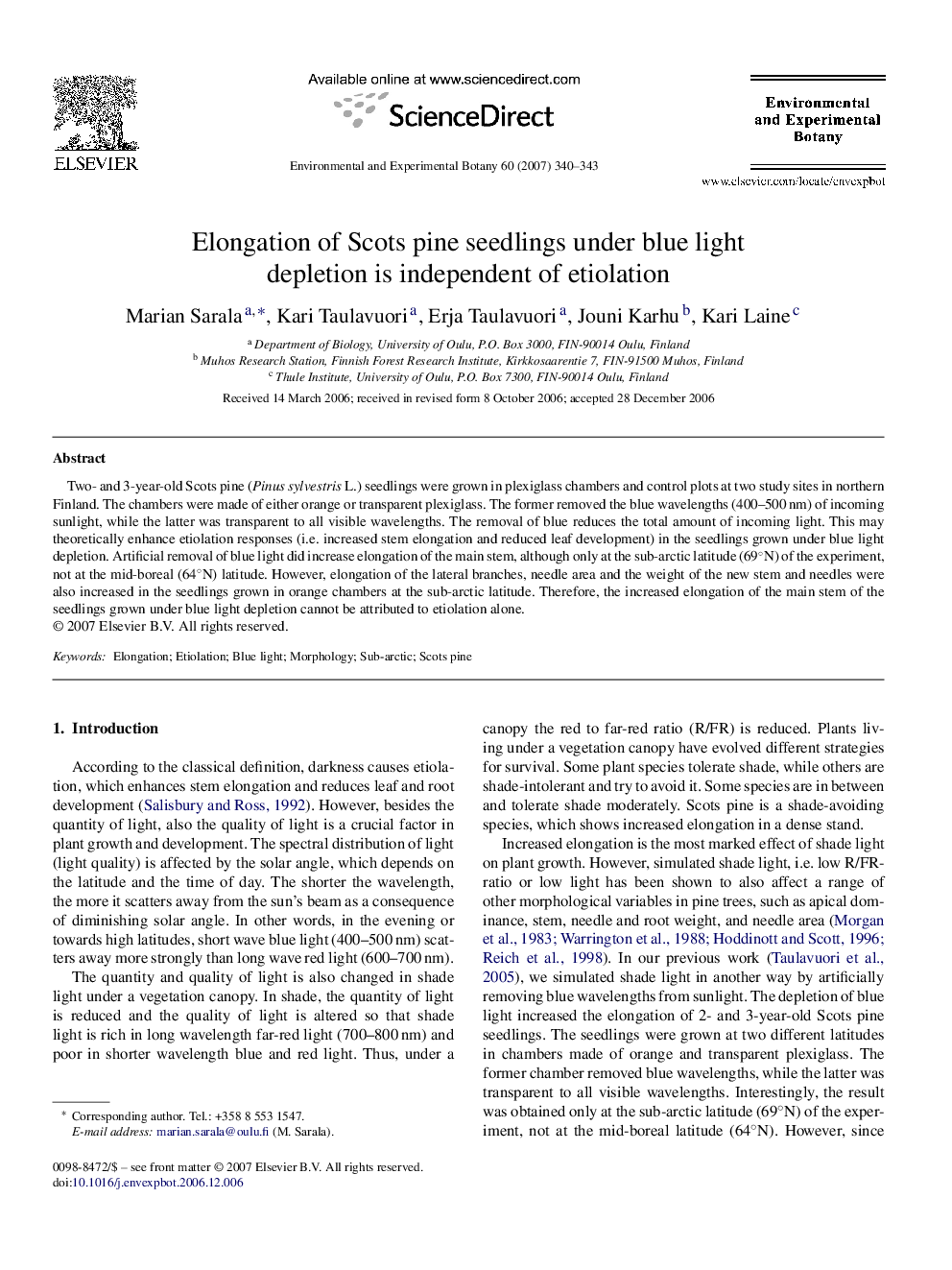| Article ID | Journal | Published Year | Pages | File Type |
|---|---|---|---|---|
| 4555462 | Environmental and Experimental Botany | 2007 | 4 Pages |
Two- and 3-year-old Scots pine (Pinus sylvestris L.) seedlings were grown in plexiglass chambers and control plots at two study sites in northern Finland. The chambers were made of either orange or transparent plexiglass. The former removed the blue wavelengths (400–500 nm) of incoming sunlight, while the latter was transparent to all visible wavelengths. The removal of blue reduces the total amount of incoming light. This may theoretically enhance etiolation responses (i.e. increased stem elongation and reduced leaf development) in the seedlings grown under blue light depletion. Artificial removal of blue light did increase elongation of the main stem, although only at the sub-arctic latitude (69°N) of the experiment, not at the mid-boreal (64°N) latitude. However, elongation of the lateral branches, needle area and the weight of the new stem and needles were also increased in the seedlings grown in orange chambers at the sub-arctic latitude. Therefore, the increased elongation of the main stem of the seedlings grown under blue light depletion cannot be attributed to etiolation alone.
